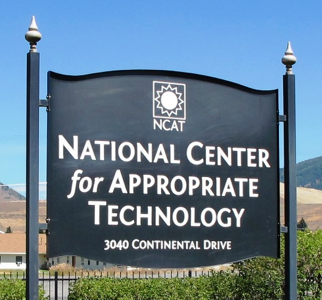A Skillful Approach for Oil & Gas Production (B-FSM-004)

Proper handling of sand in oil & gas facilities is not simply a waste-stream treatment exercise, it is a critical Flow Assurance issue. The goal of surface handling of solids is to increase or maximize hydrocarbon production, while reducing or minimizing operating costs. Applying engineering skills and appropriate technology, often transferred from other industries, produced solids can be continuously removed while sustaining oil & gas production. This appropriate technology approach is Facilities Sand Management.

As an engineer, this sign bugs me – it is missing specificity!
Facilities: surface/subsea equipment for separation, cleaning, and energy addition (e.g. wellhead to custody transfer)
Sand: tiny loose pieces of rock
Management: to handle or direct with a degree of skill
Quadrant 4: Facilities Sand Management (FSM)
Goal: To handle or direct sand with a degree of skill.
- Unit process-based technology for sand removal
- Continuous, on-line, separation at full production in multiphase or liquid flow
- Replaces or supplements downhole equipment
- Remove solids as early as possible: easier to transport, clean, and handle / solves downstream equipment problems
- Recover production from shut-in wells, restore production from choked back wells, and increase flow by co-production
- CAPEX: Medium | OPEX: Low | Production: Increase
FSM is both a set of technologies and a methodological approach. It is not a piece of equipment. The methodology (e.g. Five-Steps of Sand Management) must be followed in detail, along with identifying the proper location in the process system (e.g. Four-Nodes of Sand Removal) – however the first step is to clearly define what problem sand causes. We will discuss the effects of solids on surface facilities in the next post.
Bibliography:
- Andrews, J., Kjørholt, H., Jøranson, H., “Production Enhancement from Sand Management Philosophy. A Case Study from Statfjord and Gulfaks”, paper 95411, SPE 6th European Formation Damage Conference, Scheveningen, The Netherlands, 25-27 May 2005.
- Loong, Y., Rawlins, C.H., and Goo, D., “Upgrade of Spar Topsides with Comprehensive Facilities Sand Management System”, paper 24705-MS, Offshore Technology Conference Asia, Kuala Lumpur, Malaysia, 25-28 March 2014.
- Rafliansyah, A.P., Azkawi, A., Bharti, S., Oyemade, S., “Well Cleanup Issues in Field with Sand Coproduction Philosophy in Oman”, paper 107677, European Formation Damage Conference, Scheveningen, The Netherlands, 30 May -1 June 2007.
- Rawlins, C.H., “Sand Management Methodologies for Sustained Facilities Operations,” paper 164645-MS, North Africa Technical Conference & Exhibition, Cairo, Egypt, 15-17 April 2013.
- Rawlins, C.H., and Wang, I. I., “Design and Installation of a Sand Separation and Handling System for a Gulf of Mexico Oil Production Facility,” SPE Production and Facilities, paper 72999, Vol. 16, No. 3, 2001, pp. 134-140.
